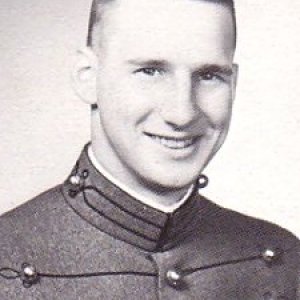- SURNAME
Sipos
- FORENAME
William George (Bill)
- UNIT
20 Tactical Air Support Squadron (504 Tactical Air Control Group)
- RANK
Captain
- NUMBER
70808
- DATE OF DEATH
6th April 1967
- AGE
25
- GRAVESITE
U.S. Military Academy Cemetery,West Point,New York Section XXXIV Site 161
- ADDITIONAL INFORMATION
from Garfield,New Jersey
born 4.10.1941
son of Joseph and Violet Sipos
husband of Nannette Sipos (1 daughter Michelle)
graduated Pope Pius XII High School,Passaic,New Jersey
graduated U.S. Military Academy,West Point July 1959-1963
3 years service
Moody AFB,Georgia (pilot training)
3 Air Transport Squadron (2 years)
20 TASS
awards D.F.C. with oak leaf cluster,Bronze Star,Air Medal
pilot (Lopez Forward Air Controller)
O-1E 51-5074
KIA near Thuong Duc,Quang Nam Province,South Vietnam
Vietnam Veterans Memorial,Washington,D.C. Panel 17E Line 111
also killed in crash
Minutoli,John Robert
Captain
see GREEN BERETS Roll of Honour
DATE OF DEATH:
06-Apr-1967CITATION:
Distinguished Flying Cross : The President of the United States of America, authorized by Act of Congress, July 2, 1926, takes pride in presenting a Bronze Oak Leaf Cluster in lieu of a Second Award of the Distinguished Flying Cross (Army Award) (Posthumously) to Captain William George Sipos (AFSN: FR-70808), United States Air Force, for extraordinary achievement while participating in aerial flight on 6 April 1967 in Southeast Asia. A friendly long-range patrol operation on a classified mission requested a visual reconnaissance to assist them in determining the possible location and size of North Vietnamese Army units operating in the enemy controlled area. The terrain in which the friendly force was located was very remote, extremely mountainous with deep valleys, and covered with dense broadleaf, and deciduous forest. The enemy had extensive trails and fortifications throughout this area. Visibility from the air that day was very limited due to thick ground fog and haze. Having heard this request, Captain Sipos immediately and willingly volunteered to act as pilot for this mission, knowing well of the imminent dangers and hazards involved in flying over enemy controlled area. Because of the limited visibility and thick ground fog and haze, as well as thick foliage around the target area, it was necessary for the aircraft to fly at an unusually low tree-top altitude in an effort to make a better assessment of the enemy situation and to thoroughly reconnoiter the approaches to the friendly patrol. Because of the extremely low altitude at which the aircraft was flying, about 700 from meters from the patrol, it was impossible to observe what actually occurred or to determine if the aircraft received any enemy ground fire. The O-1E aircraft crashed into the dense forest, taking the lives of both the aerial observer and Captain Sipos. Captain Sipos' personal bravery, devotion to duty, and heroic actions in willingly facing the inherent dangers of a low level aerial recon were in keeping with the highest traditions of the military service and reflect great credit upon himself, his unit, and the United States Air Force.
Last edited by a moderator:




